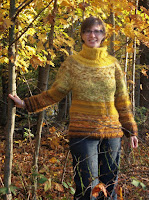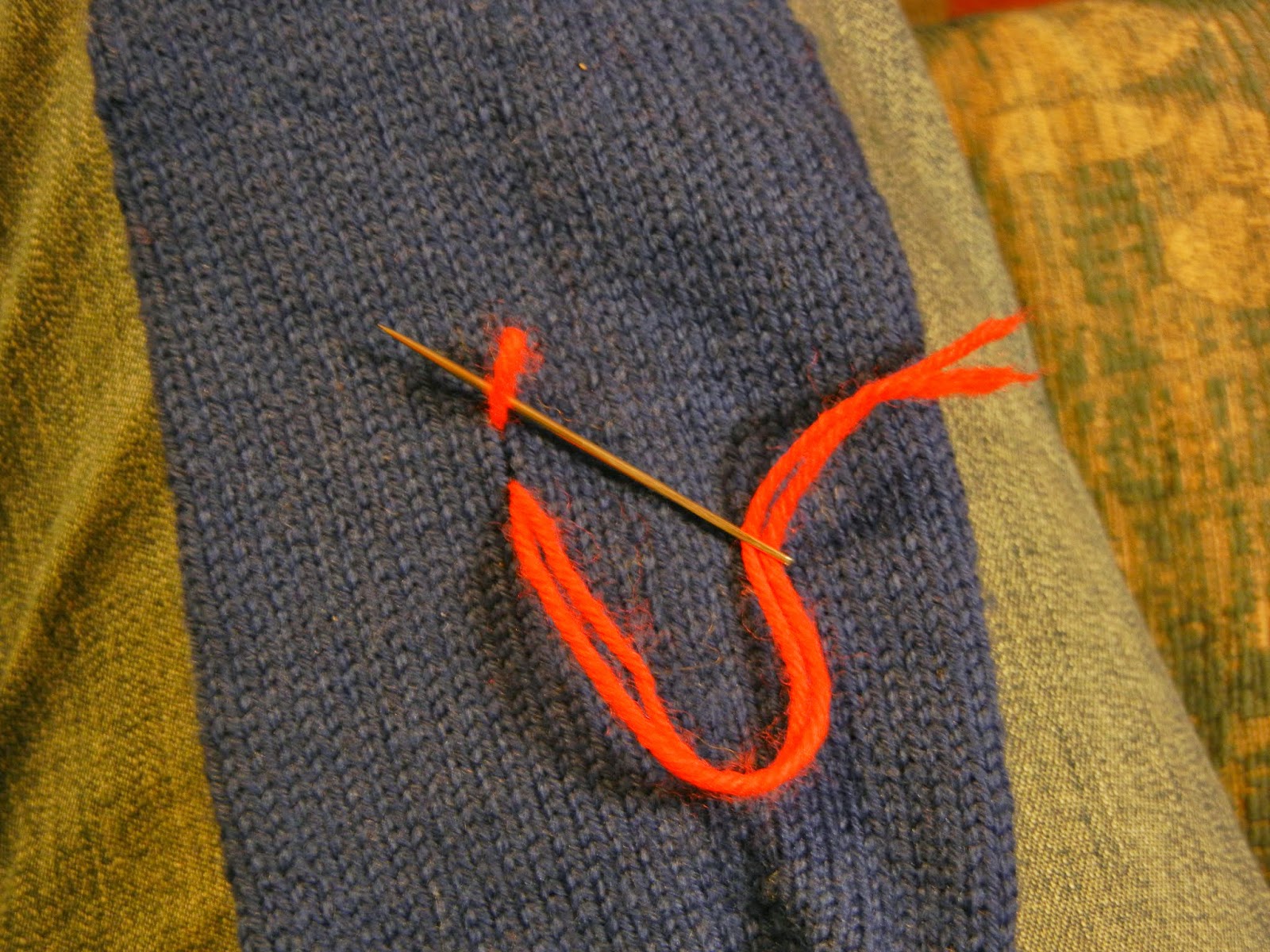So once there was this sweater that I picked up from Goodwill. It was orange and I liked to wear it. Especially in the fall.
But then I was tired of it, and there was a spot on the cuff I couldn't wash out. And in a fit of decisiveness, I took it downstairs, sat on my couch and ripped the sweater apart. In a very organized way, of course.
I got 230 grams of very lightweight 40% merino/30% viscose/20% angora/10% cashmere. When I entered the yarn in my
Ravelry stash, I discovered I had unraveled the same sweater in pink! (You can see a picture in
this post.)
I got a hankering to knit socks out of this yarn so I decided to ply it. In order to ply it, I decided to twist it. You twist in one direction and then ply in the other. Then the yarn wants to stay put. You could just ply it and block it, but I didn't want to in this case.
Here is one sleeve twisted on the spindle next to the yarn from the other sleeve:
I had a funny moment getting started. I twisted the yarn the "regular" way (clockwise or Z-twist), letting the spindle spin and spin. Then I stopped to inspect the yarn and it was utterly not twisted--in fact, I thought it was less than before I started. So I examined the wool straight from the sweater a little more closely and realized it already had some twist in it (very unusual for yarn from a commercial sweater), and it was going the other way! So I twisted it in the other direction and things went fine from there. (There's no advantage to one direction or the other; it's just a convention to twist the one way and ply the other.)
Once the yarn was all twisted, I was eager to ply it. Not only was it the final step, it also would go a lot easier and quicker than the first step! But I had to do some other stuff, get ready for a trip, etc., and my spindle sat on my table for a couple days.
But finally I had a few minutes. I put the spindle in my "super fancy" lazy Kate (yup, that's what they're called):
 |
Constrained by the holes in the side of the box, the spindle
can spin freely, making it easy to unwind. |
and wound up a cake of yarn:
Once I had a cake of yarn, I put it in my project bag to take on the trip.
I tried out a double strand, triple strand and quadruple strand and decided that the triple strand gave the thickness I wanted. That meant chain plying (aka Navaho plying). It's basically a long crochet chain done with your fingers while you ply.
When my fingers got sore from knitting socks during the drive, I pulled out the ball of yarn and my spindle, and got to plying.
It was easy work as the yarn practically plies itself since it was twisted already.
With just a little more time once I got to my destination, I had the whole ball done.
The yarn has nothing to do with my trip to the Netherlands, but I feel like they will make nice souvenir socks of the trip anyway. I did purchase a sock yarn while there that I optimistically called orange, but it's really yellow. It was the best I could do at the time, but I have admitted to myself that it's not orange.
I am happy with this result and can't wait to cast on a new pair of socks. My first plan was to knit one sock with the plied yarn and the other with the yarn from the other sleeve unplied, just to experiment, but I've since decided to use the plied stuff for the toe, foot and heel of the pair and use the unplied for the leg. The wear parts will be stronger and I won't have to ply everything. We'll see how it goes...




























































